
|
Menu |



|
Menu |


The launch of InSight

| For more photos, simply follow Marsty. | |
| For more detailed information, simply follow Cosmo. |
InSight mission

 Mission InSight, an international collaboration
Mission InSight, an international collaborationNASA’s Discovery program has already launched twelve missions. However, the InSight mission is the first that will provide data on the internal structure and composition of Mars.
Watch the video below to find out all about this great adventure for NASA, which has been exploring the Red Planet for 50 years!
NASA has been exploring Mars for more than 50 years (© NASA).
What does the acronym InSight stand for ? It is short for INterior exploration using Seismic Investigations, Geodesy and Heat Transport
 What is InSight’s prime science objective?
What is InSight’s prime science objective?The main scientific objective of the InSight mission is to understand and explain the evolution of rocky planets by studying the internal structure of Mars.
In the heart of Mars (© CNES, Team SEIS).
Rocky planets like Earth, Venus or Mars are slowly formed by the accretion of rocky bodies. Little by little, as the rocks collide, they gather together, increasing the size of the planet. Under the influence of pressure and heat, the rocks melt. The heaviest elements fall towards the centre of the planet while the lighter elements rise towards its surface. When most of the collisions have stopped, the planet cools down, slowly.
The planet separates into 3 parts. In the centre of the planet is a core, above this a mantle and then finally a crust.
Although all the rocky planets in our solar system share similar structures and compositions, the meteoritic materials from which they formed are not uniform.
InSight’s goal is to understand the formation of the different layers (core, mantle and crust) that constitute the rocky planets. Scientists hope to answer this question by accurately determining the structure and composition of Mars, and comparing it with those of the other rocky planets from the solar system.
 InSight, a geophysical station set up on the surface of Mars
InSight, a geophysical station set up on the surface of MarsSEIS to listen to the heartbeat of Mars (© CNES, Team SEIS, ETHZ).
The measurements collected on Mars will provide scientists with information about the diameter, thickness, density and overall structure of the planet’s core, mantle and crust.

Illustration of InSight's geophysical station with some technical information (© NASA).
 The seismometer (SEIS)
The seismometer (SEIS)Seismic measurements provide information on the size, composition and (solid/liquid) physical state of the core, the thickness and structure of the crust, the composition and structure of the mantle, the rate and spatial distribution of internal seismic activity and the rate of meteorite impacts on the surface of the planet.
The seismometer on the InSight probe is an extremely sophisticated instrument that has required more than 20 years of development by CNES engineers (France) and their collaborators.
For more information on the construction and scientific objectives of SEIS, goes to the NASA website: https://mars.nasa.gov/insight/spacecraft/instruments/seis/ or on the SEIS team website at IPGP in Paris: https://www.seis-insight.eu/fr/
The video below shows the work involved in the development of SEIS.
Philippe Lognonné et Philippe Laudet, SEIS Project Manager, presents SEIS, the Mars seismometer (© CNES/IPGP).
Conditions on Mars and during the journey are difficult for SEIS electronics. This equipment must also be small, lightweight, energy efficient and able to withstand vibrations during takeoff and landing.
The AEIL group of the ETH Zürich Institute of Geophysics is involved in the InSight mission and has been developing the data acquisition electronics and the seismometer control electronics.
The video below will show you some of the work done.
Professor Domenico Giardini presents the role of ETH Zurich for the InSight mission (© NASA/ETHZ).
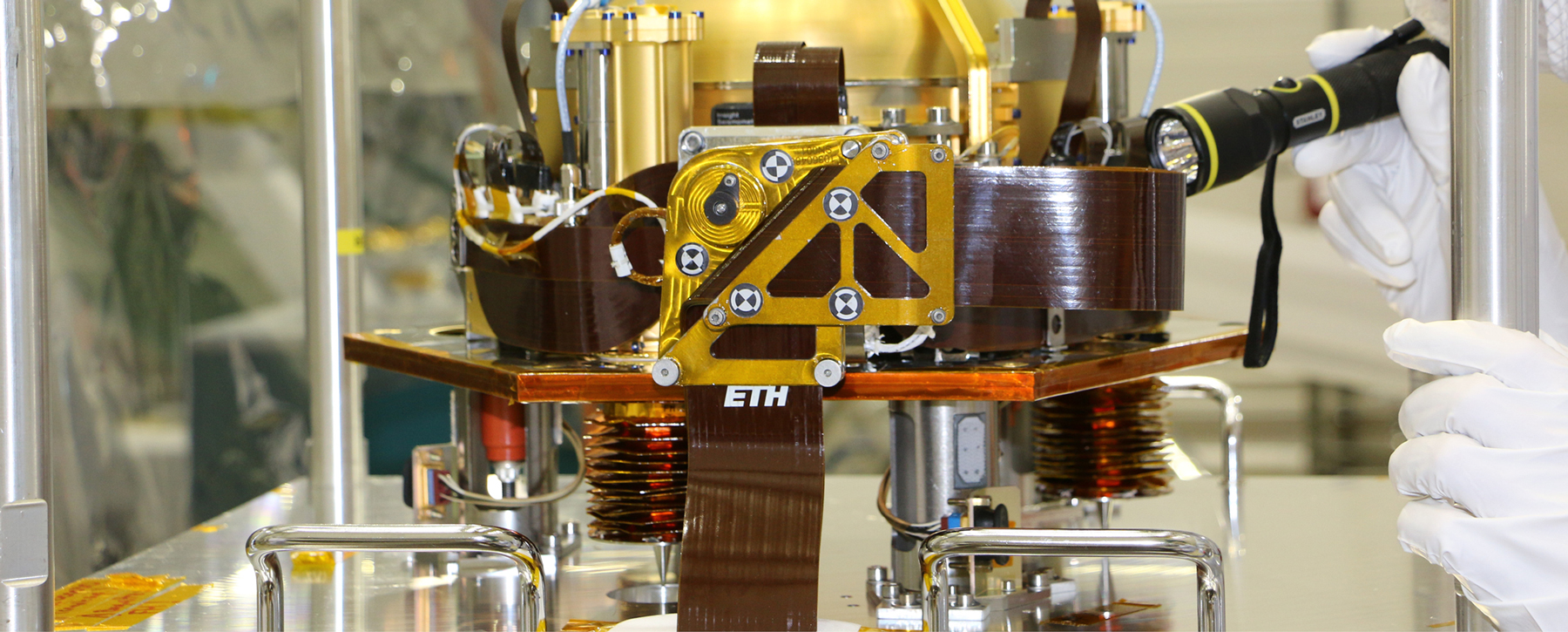
Development of data acquisition electronics and SEIS seismometer control electronics (© ETHZ).
At the heart of the seismometer are 3 ultra-sensitive pendulums, which detect the smallest movements of the Martian surface.
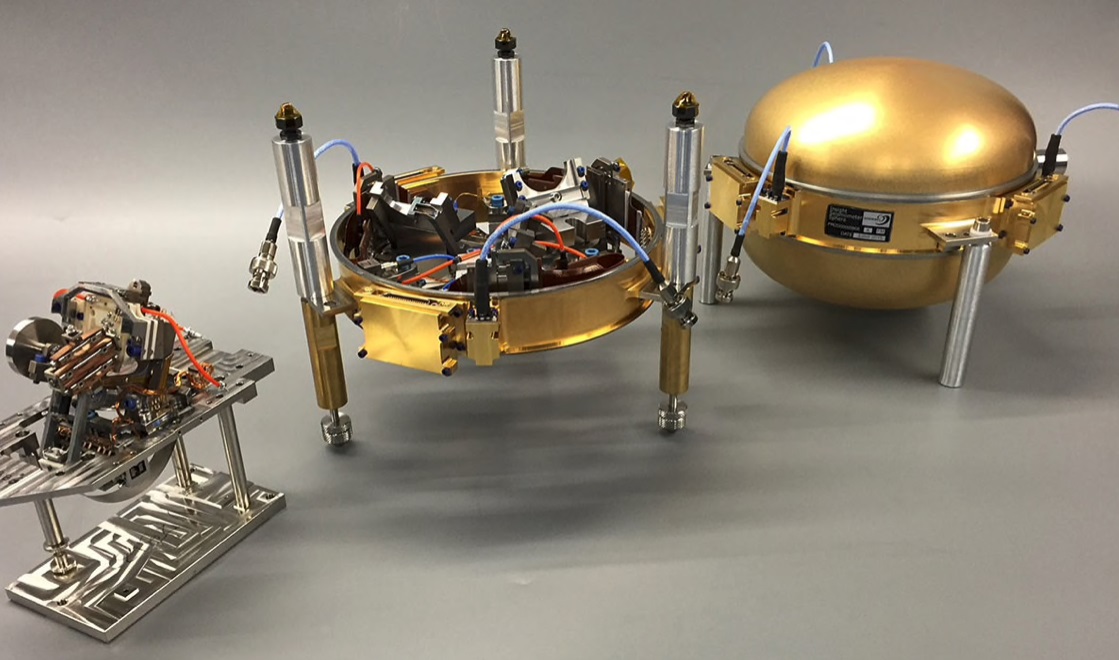
SEIS is a seismometer containing 3 pendulums which detect the smallest movements (© IPGP/SODERN/CNES).
On Mars, the average temperature is -55°C. Very large temperature variations ranging from -143°C to +20°C are observed.
Therefore, the SEIS seismometer has several thermal barriers including a protective shield that completely covers it.
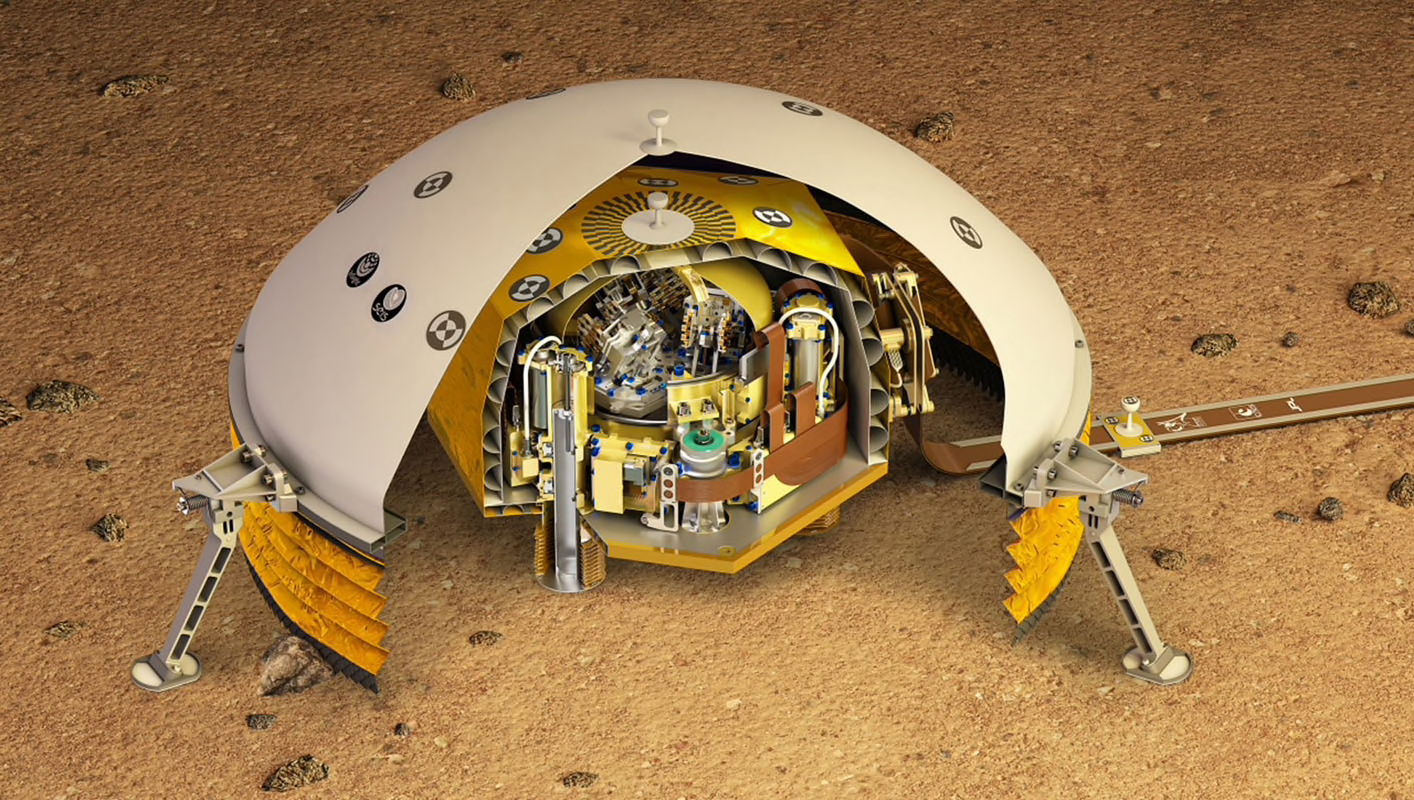
Cross-section through the Martian seismometer SEIS (© CNES).
 The HP3 heat probe
The HP3 heat probeThe Heat Flow and Physical Properties Package (HP3) is a super-thermometer designed to measure the heat flux escaping from the inside of the planet, i.e. to take the internal temperature of the Red Planet and determine its thermal evolution.
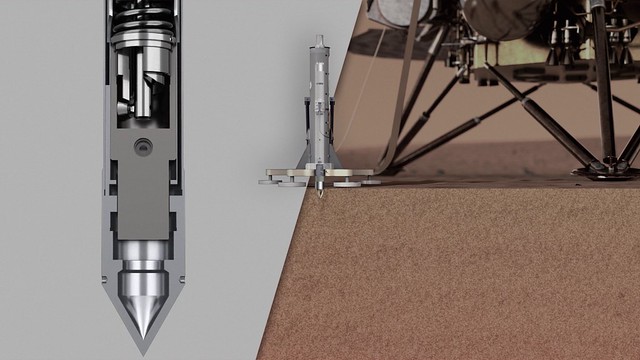
The mole (HP3) used for burrowing(© DLR).
The HP3 probe was developed by the DLR laboratory in Germany. It measures temperature variations inside the red planet. This is called heat flow.
To make these measurements at different depths, HP3, nicknamed “the mole”, will burrow up to 5 metres into the ground The probe measures the amount of heat released by the Martian core. This way the cooling rate of Mars can be calculated.
Geological observations made during previous missions have revealed that the Martian subsoil contains ice. If there is a significant temperature variation between the core, mantle and surface of Mars, scientists expect that at a certain depth the ice will be transformed into liquid water.
So the possibility of finding water on Mars is very real !
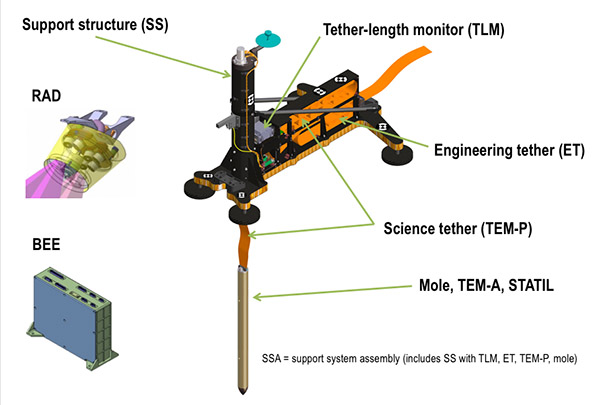
The HP3 experiment consists of a casing that holds the measuring and data cables needed to connect to the landing probe. the penetrometer (Mole) is located at the front. The 40 centimetres long and 27 millimetre diameter ’Mole’ can proceed to a depth of up to 5 meters into the Martian soil using a hammering mechanism. (© DLR).
The video below shows how HP3 works.
From a thermophysical perspective, planets can be considered heat engines that generate volcanism, tectonics and magnetism. Heat flow measurements are important boundary conditions for modelling the thermal evolution of Mars. While the seismometer and the observation of perturbations of the planet's rotation axis as part of RISE shed light on Mars' interior structure, the measured heat flow constrains hypotheses about its evolution (© DLR).
This is the first time in the history of space exploration that the soil of a planet is probed to such depth !
 RISE Radio Science Experiment
RISE Radio Science ExperimentRISE helps us keep tabs on InSight! This tells us exactly where Mars is in space, and just how much the planet wobbles around in its orbit. This information will add to our knowledge of the size of Mars’ core, and helps us determine whether it is liquid or solid.”
InSight’s Rotation and Interior Structure Experiment, RISE, precisely tracks the location of the lander to determine just how much Mars’ North Pole wobbles as it orbits the sun. These observations will provide detailed information on the size of Mars’ iron-rich core. They will help determine whether the core is liquid, and which other elements, besides iron, may be present.
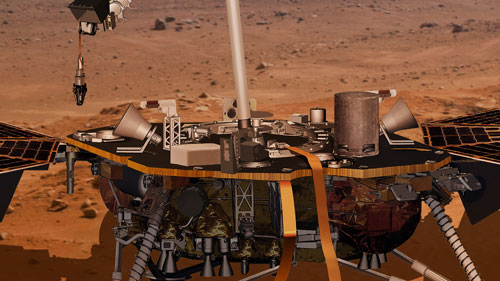
RISE instruments on InSight (© NASA).
5 Things to Know about RISE
1 RISE Tracks InSight RISE tracks the location of the InSight lander every day and knows its location to within a few inches (centimetres).
2 A Fast-Moving Siren RISE uses the same principle that causes the sound from a fast-moving siren to change as it moves away, to study Mars’ core.
3 Hard-Boiled or Raw ? RISE will help determine whether Mars has a solid metal core, like a hard-boiled egg, or a molten, liquid metal core, like soft-centered, raw egg.
4 RISE is Like a Mirror RISE simply sends back the signal sent to the lander from Earth, via the Deep Space Network, revealing the lander’s location.
5 Measuring Martian Days As the seasons change, carbon dioxide sublimates or condenses at the poles, causing tiny changes in the rotation rate of Mars, affecting the length of the Martian day. RISE will be able to measure these changes!
 The different phases of the InSight mission
The different phases of the InSight mission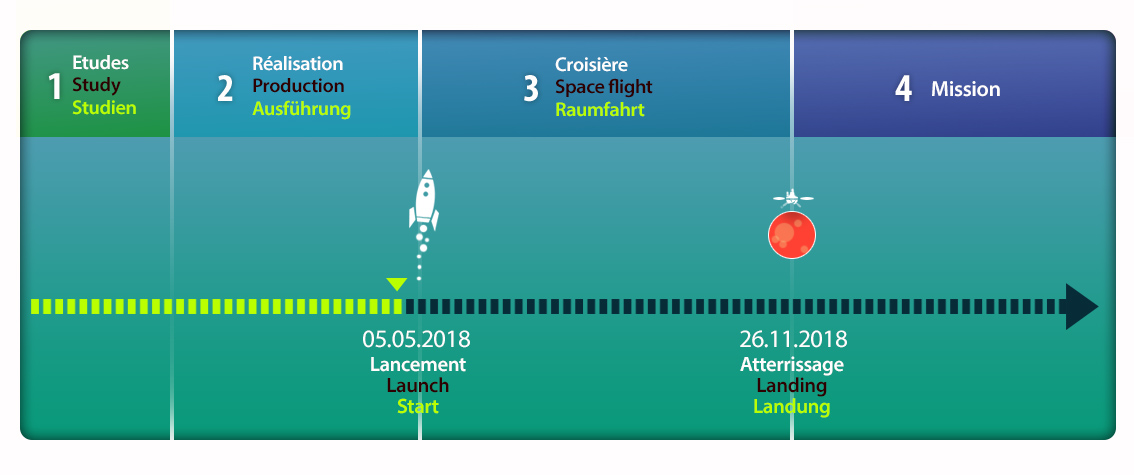
Timeline of the Insight mission (© Arteclick).
The launch happens on May 5, 2018.
The flight lasts 210 days with a scheduled landing on November 26th, 2018.
SEIS is deposited on December 19, 2018 on the surface of Mars, then, tests are performed to verify its installation and operation.
SEIS becomes fully operational in early February 2019.
HP3 is deployed on February 12, 2019
The first Mars earthquake named Marsquake is detected on April 6, 2019.
The mission duration takes a little over 1 Mars year (~2 Earth years); 708 Sols (Mars days), or 728 Earth days.
The mission is scheduled to terminate at the end of 2020.
InSight, a large international family (© Université de Paris, IPGP, Team SEIS, NASA, DLR, CNES, ETHZ, Caltech)
Quiz!
 Validate your knowledge!
Validate your knowledge!
The launch site

 Launch of InSight in the USA
Launch of InSight in the USAInSight took off on an Atlas V rocket from Vandenberg Air Force Base in California, USA to fulfill its mission to Mars.
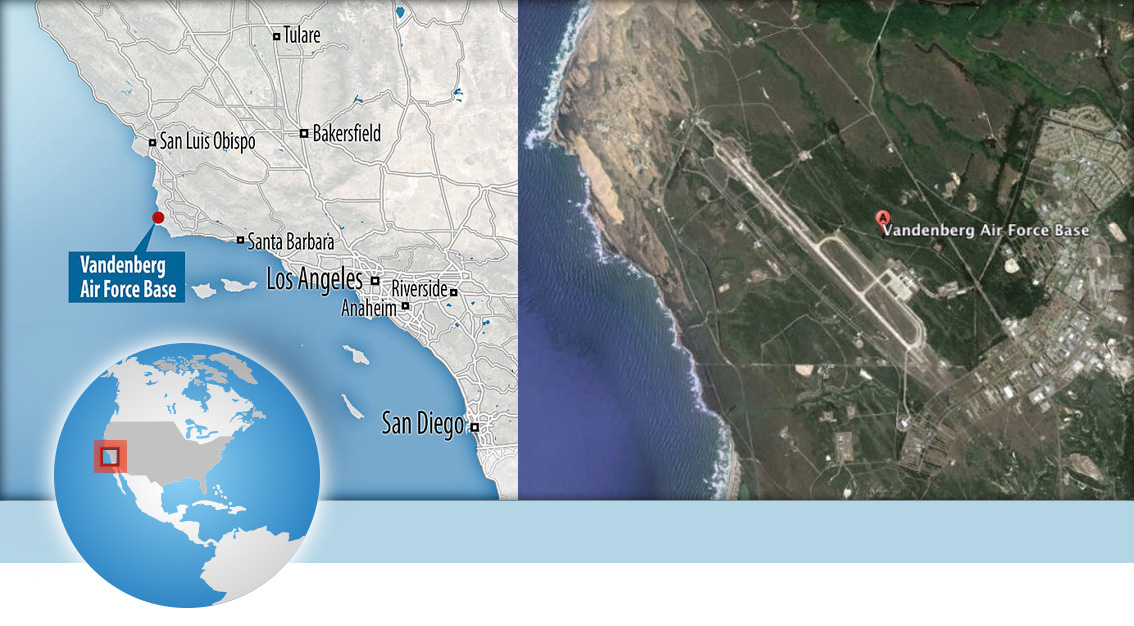
Vandenberg Air Force Base in cClifornia (© NASA)
 The Vandenberg base
The Vandenberg baseThe Vandenberg base is a US military facility in Santa Barbara County, California. It is used by NASA, along with Cape Canaveral and the Kennedy Space Center, it is one of three primary centres for rocket launches in the United States.
The base covers an area of 396,591,929 m2, equivalent to roughly 57,000 football pitches, and stretches over 56 km along the Pacific coastline.
Vandenberg Air Force Base has six launch complexes, each of which has been tailored to a specific type of launcher. Complex 3, which is set aside for the Atlas launcher, is marked on the interactive map below.
To learn more about Complex 3, click on the numbered markers 1 to 10.
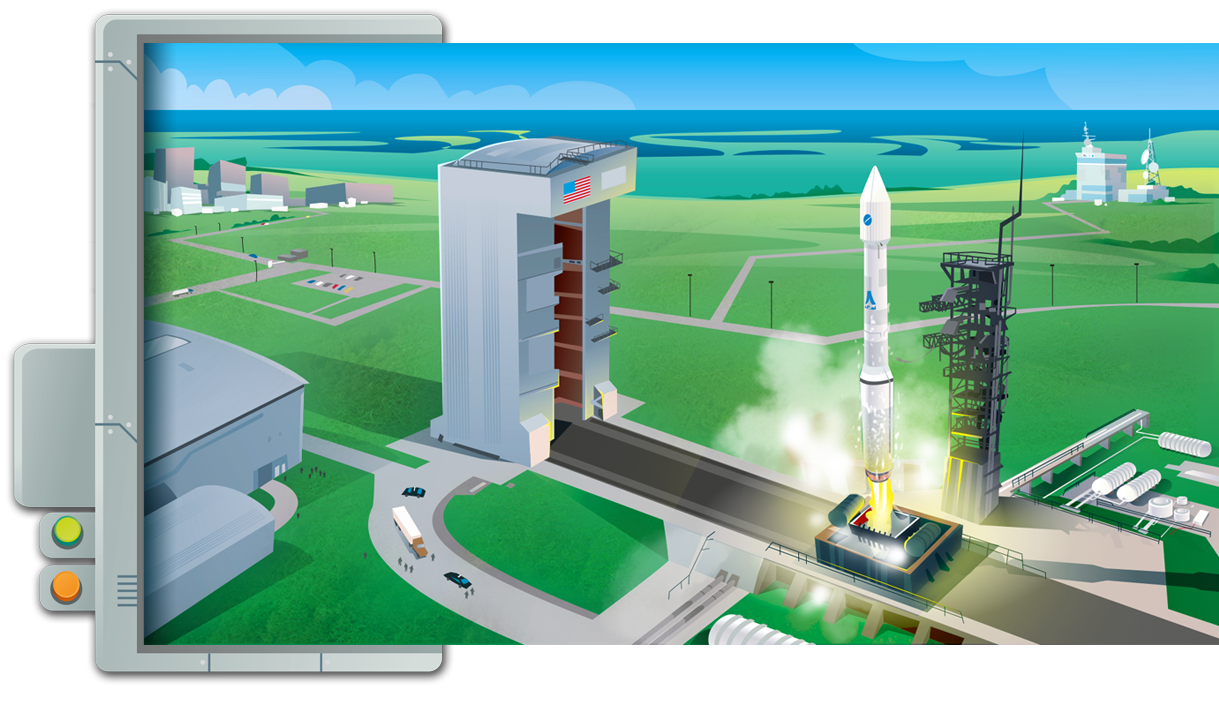
The mobile assembly tower at the Vandenberg launch site

Family homes at Vandenberg Air Force Base. Extensive sports and leisure facilities are available to the families living at the base to make their stay there as pleasant as possible.

The Atlas V 401 rocket is 58.3 m tall and weighs 333.320 kg. The launcher was developed by Lockheed Martin.
It comprises a first stage, propelled by an RD-180 rocket engine that burns a mixture of kerosene and oxygen, with a second stage called Centaur.
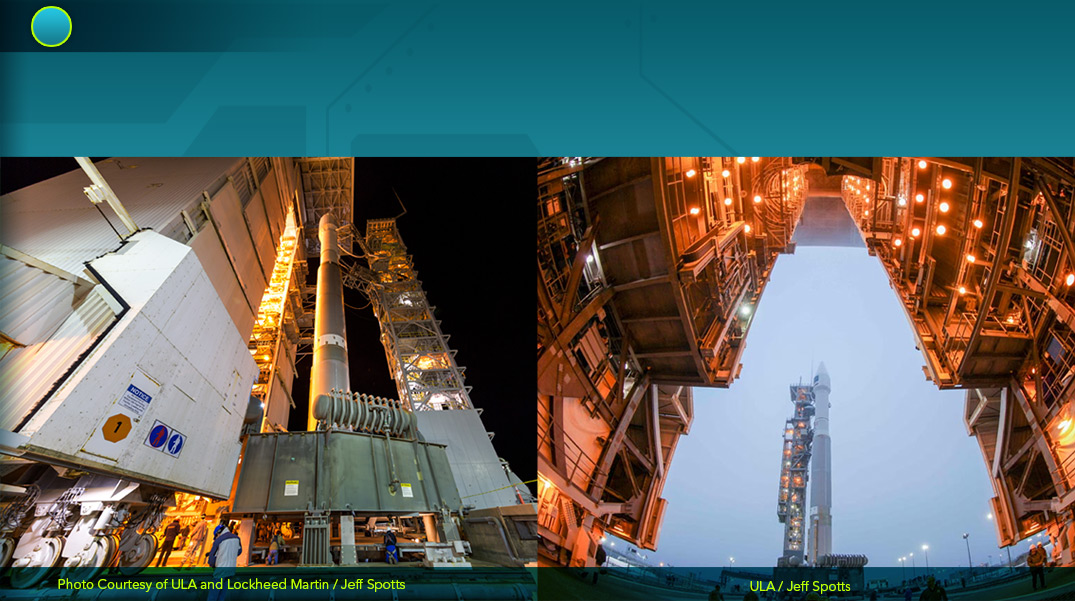
The umbilical tower fills all the stages of the rocket with the hydrogen and oxygen propellant needed to generate the thrust needed to lift the launcher off the ground.
It also supplies power and air conditioning for the various instruments placed inside the launcher.
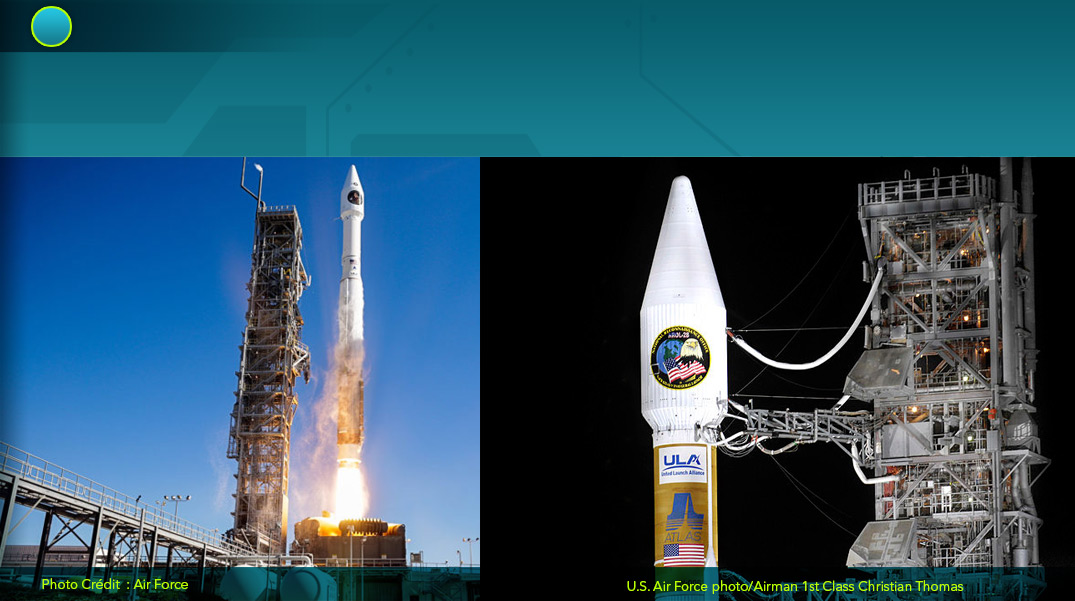
The Vandenberg base’s launch platform supports the weight of the rocket at liftoff. Openings underneath the launcher are aligned with the rocket’s nozzles.
The launch pad also has openings to allow gases and flames to escape through trenches underneath it when the rocket’s engines are ignited.
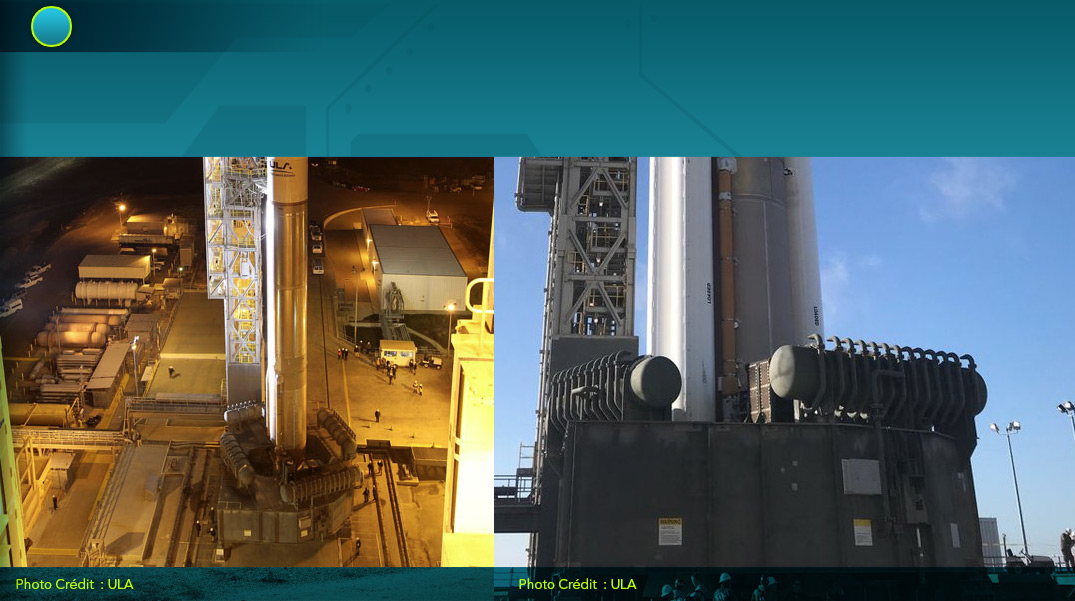
Access road to the launch platform
The launcher is mounted directly onto the launch platform, inside the assembly tower. Then, the platform is placed on the access road, next to the umbilical tower.
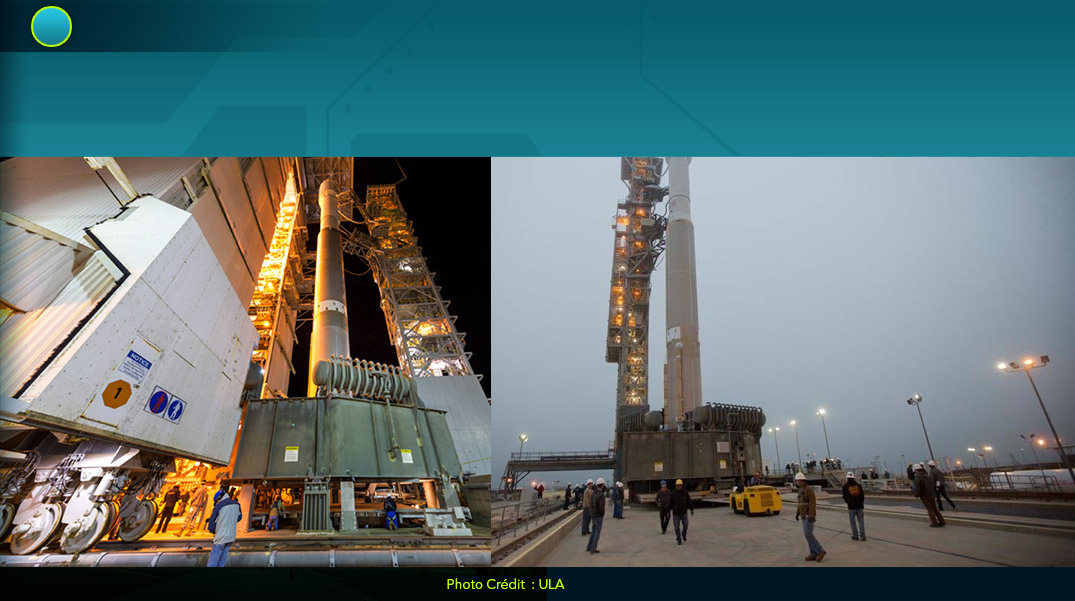
Hydrogen, oxygen and kerosene storage area at the Vandenberg base
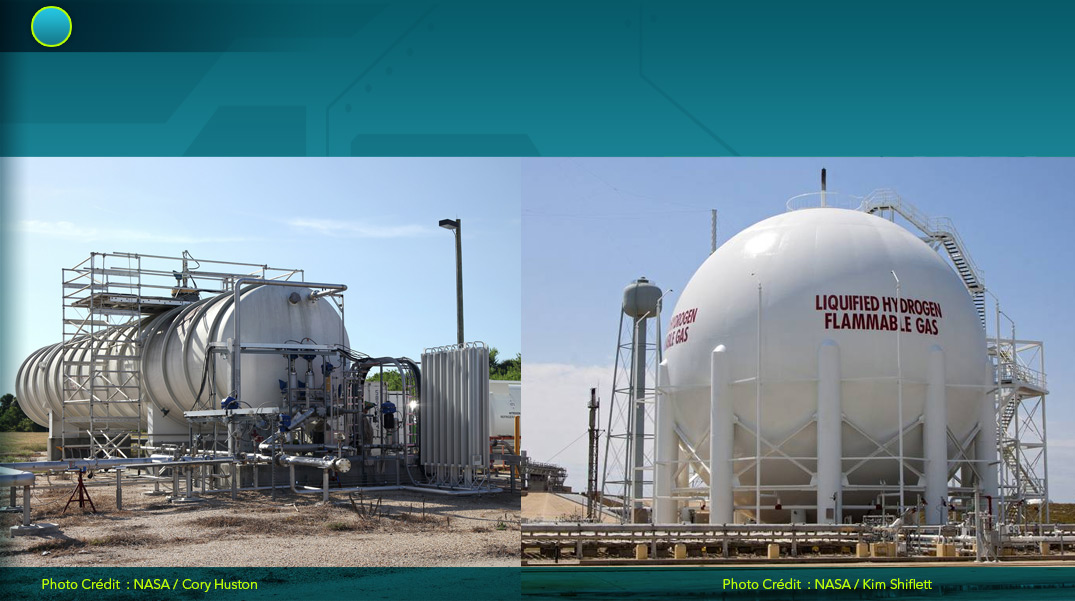
##
The InSight Mission Control Centre at Vandenberg Air Force Base
This centre, which is located near the launch pad, is protected against the effects of an explosion or impact.
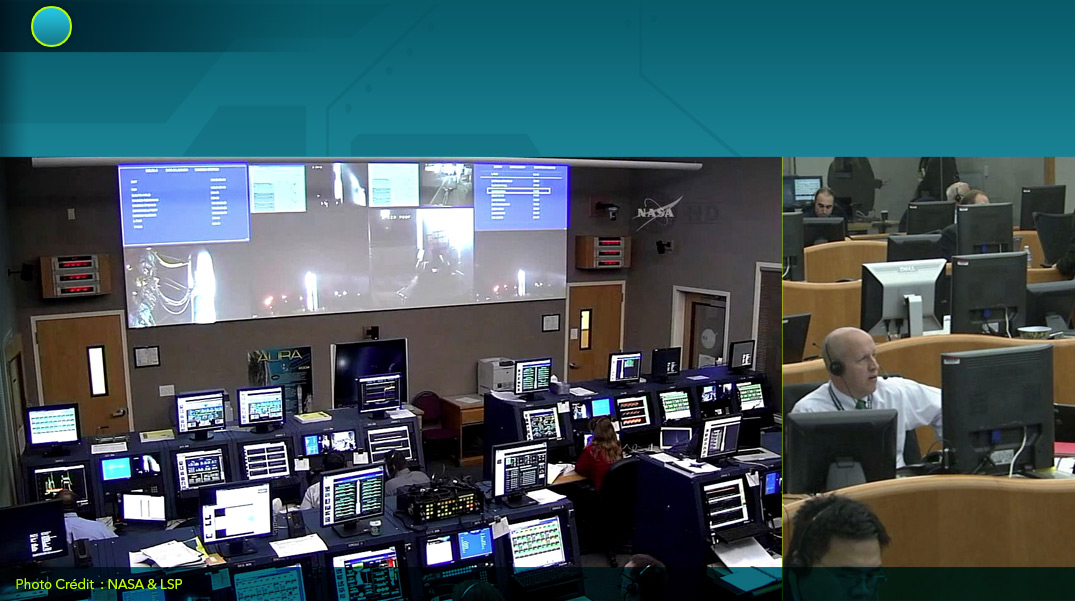
##
The assembly building at Vandenberg Air Force Base
Once InSight has arrived at Vandenberg Air Force Base, the mission team will have plenty of work to do on the spacecraft’s final assembly.
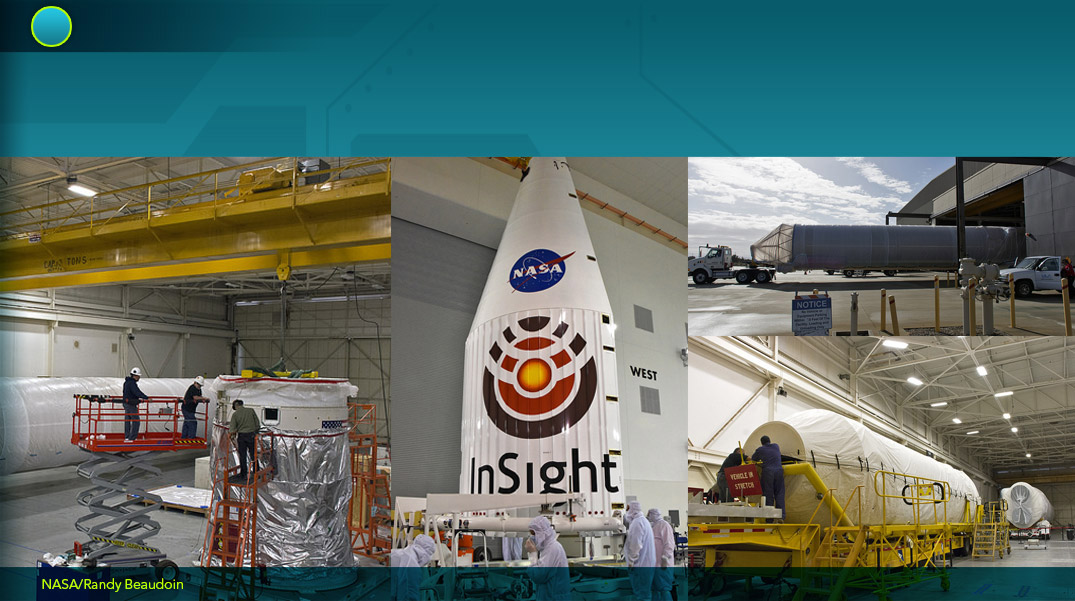
Launch pad 3
The launch pad is connected to the rocket assembly buildings and command centre. These buildings are all located a safe distance away.
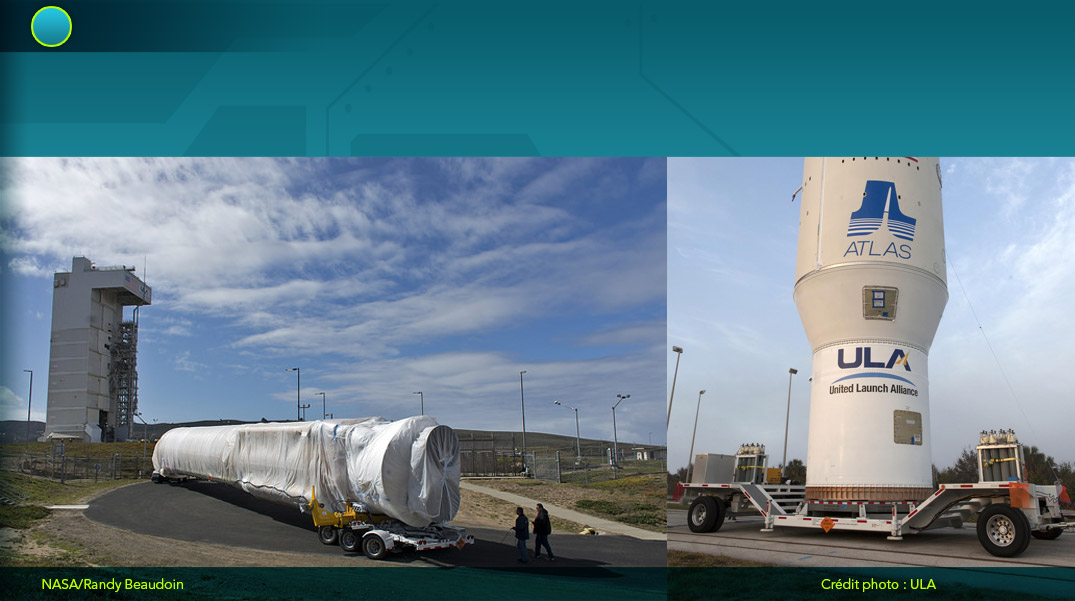
 Launch window started May 5, 2018
Launch window started May 5, 2018The launch window is the period during which conditions are optimal for a rocket launch. Since navigating through space between moving locations like planets is essentially a ballistics problem, the spacecraft must be launched at the right time, in the right direction and with the right speed depending on the distance to be covered.
For reasons to do with distance, economy of time, batteries and other technical considerations, scientists scheduled the launch of InSight for 04:00 on 5 May 2018. This is the first day of the launch window corresponding to the period when Mars is closest to Earth.
Quiz!
 Validate your knowledge!
Validate your knowledge!
The launch vehicle

 Which launcher for InSight?
Which launcher for InSight?The InSight probe was sent to Mars thanks to the very powerful Atlas V launch vehicle.
It is one of the largest rockets available for interplanetary flight. This rocket is 57 meters high, the height of a 19-storey building, and weighs 333,000 kilograms.

Comparative size of Atlas V (© Arteclick).
The modularity of the Atlas V rocket means it is available in any of 10 variants, which are distinguished by using names specific to this generation of launchers. The generic name, Atlas V, is followed by a three-digit code - 401 or 411 or 531 and so on - which identifies different versions of the rocket.
The first digit - 3, 4 or 5 - indicates the diameter of the rocket’s payload fairing, or nose cone, in meters.
The second digit - between 0 and 5 - indicates the number of thrusters attached to the central stage and used during the rocket’s liftoff.
The third digit - a 1 or 2 - indicates the number of engines fitted to the second stage of the rocket, called the Centaur stage.
 Composition of the Atlas V rocket
Composition of the Atlas V rocketFor the InSight mission, the Atlas V rocket is configured in version 401, which means that its fairing has a diameter of 4 m, there is no thruster attached to the central stage and its Centaur stage has a single engine.
A real headache for the engineers!
Take a good look below at the various stages of the Atlas V 401 launcher












 The assembly of the Atlas V 401
The assembly of the Atlas V 401Assembling the Atlas V rocket is like a gigantic Lego challenge. Each component of the rocket, after several checks by its makers, is sent to the Vandenberg Air Force Base. The team of technicians and engineers take delivery of and store the various rocket components in purpose-built facilities. There, new tests are carried out before the final assembly, which takes place on the mobile assembly tower.
Run through the photos in the window below to follow the different phases of the Atlas V 401’s assembly, from mounting the SEIS seismometer and taking delivery of the probe to mounting the main thruster and the Centaur stage.
 Liftoff of the Atlas V 401
Liftoff of the Atlas V 401To ensure the shortest possible flight to Mars, the launch window for the InSight mission is scheduled for May 5, 2018 at 4 am. An extremely precise protocol is put in place for the launch.
The launch of the rocket is both a critical and impressive moment. No error is permitted, at the risk of the mission failing, or destroying the launcher. Failures are very rare, as the teams that work on this mission are very experienced.
48 hours before the launch, the countdown procedure begins, a lengthy sequence of checks of all the launcher’s ‘vital organs’, such as its motors, power, fuel supplies and communications.
24 hours before the launch, the Atlas V rocket is driven to the launch platform and hooked up to the umbilical tower. Another extensive series of checks is performed, some of which are outlined below.
1 hour before liftoff, the final stage of the launch begins. Some power cables remain connected, as do two metal gantries holding the rocket in place.
30 minutes before liftoff, base personnel must evacuate the launch zone.
15 minutes before liftoff, tension is very high at the control centre. The silence in the room is total and will remain so until the rocket takes off. At any moment the launch can be interrupted and the countdown stopped.
30 seconds before liftoff, the engines are fired up.
15 seconds before liftoff, the metal gantries holding the rocket in place are withdrawn.
10 seconds before liftoff, the final countdown starts out loud.
…10, 9, 8 ,7 ,6 ,5 ,4 ,3 ,2 ,1 ,0

ATTENTION Rocket take-off (© Arteclick).
Prepare for takeoff !
Liftoff of an Atlas V launcher from Complex 3 of Vandenberg Air Force Base (© NASA).
We have liftoff ! Congratulations !
Congratulations to all the teams who helped organize, build and monitor this mission.
Next, to follow InSight’s launch, cruise and landing on Mars explore Adventure 4 !
Quiz!
 Validate your knowledge!
Validate your knowledge!
Game
 The Rocket builder
The Rocket builderPlay with what you have just learned !
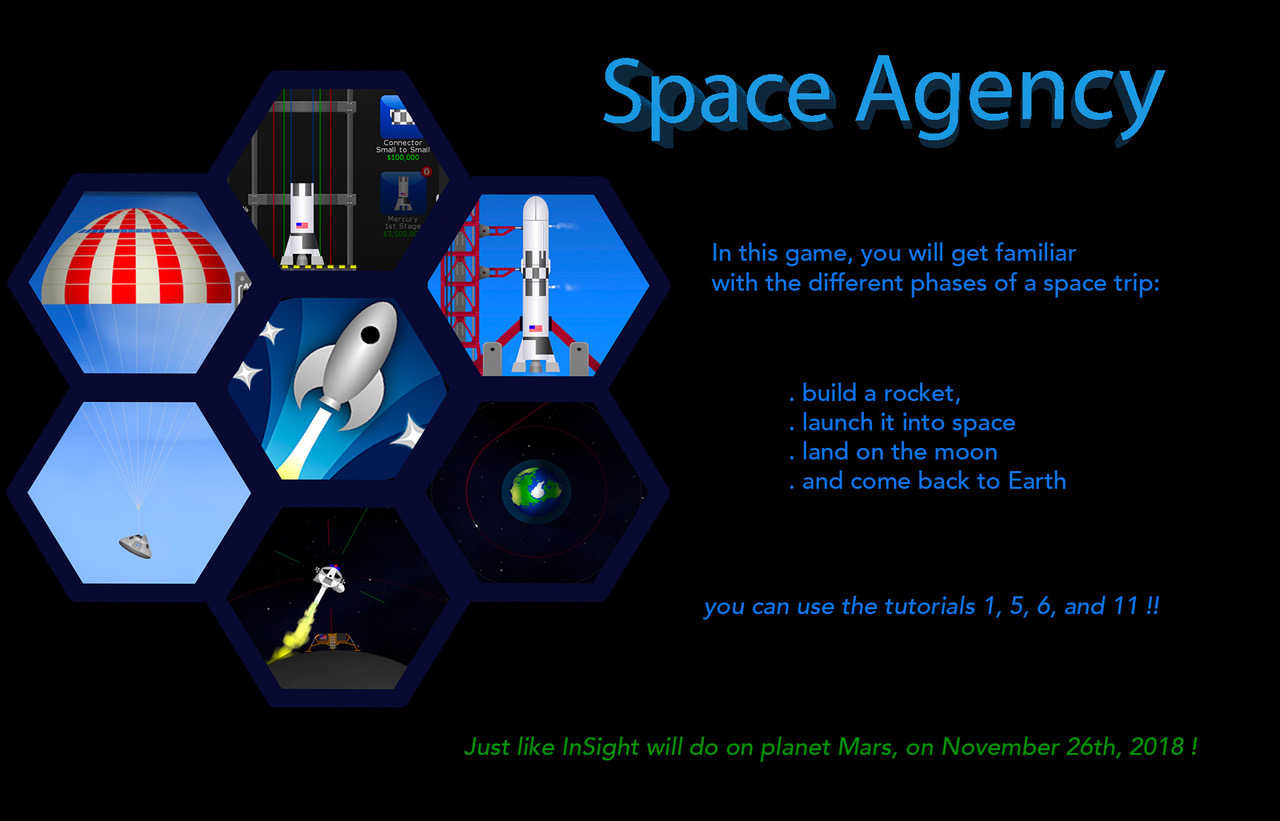
Previous adventure
End of mission

Next adventure
We would like to thank :
Paul Denton
Denton Seismo Ltd UK,www.dentonseismo.co.uk
English translation
Serge Monnier
Aggregation of Philosophy
Proofreading
Nadine Beyeler and Sonja Bertschi
German translation
Philippe Labrot
IPGP, Institut de Physique du Globe de Paris, France
Scientific advice
Philippe Lognonné
IPGP, Institut de Physique du Globe de Paris, France
Scientific advice
Philippe Laudet
CNES, National Centre for Space Studies, France
Scientific advice
William Bruce Banerdt
JPL, Jet Propulsion Laboratory, Pasadena, CA, USA
Scientific advice
Credits : IPGP, NASA, JPL, CNES, CEA, ETH Zurich and University of Zürich